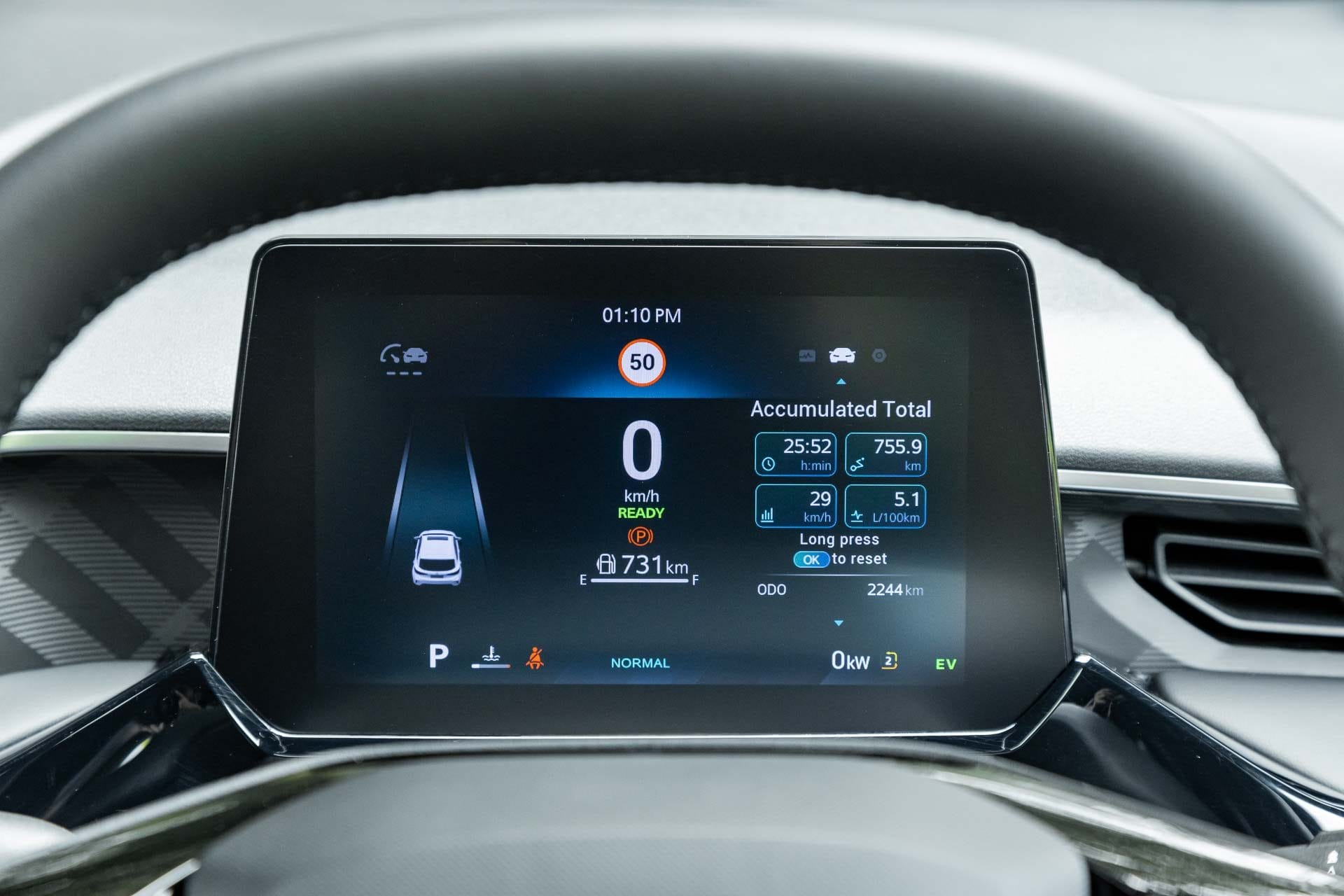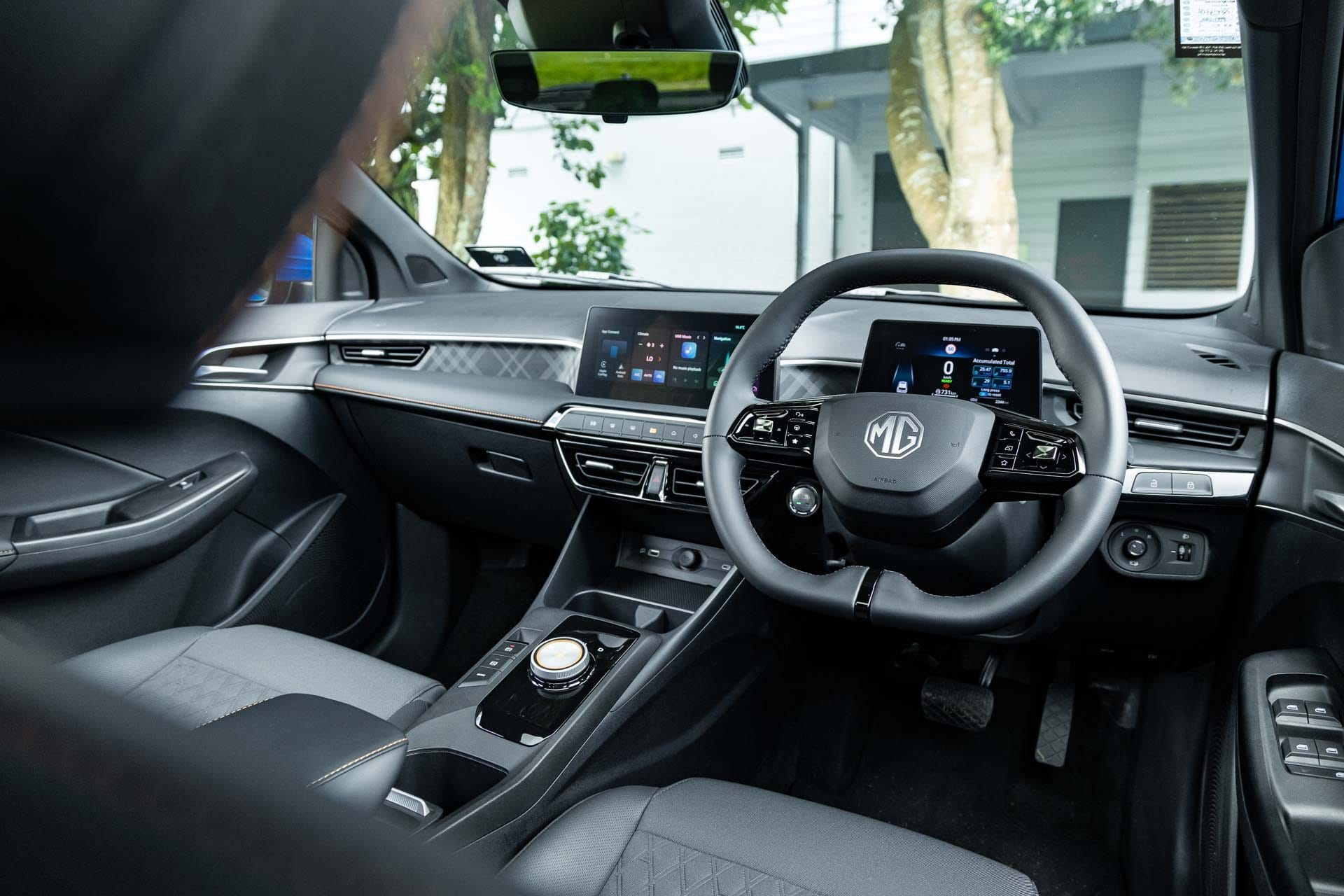2024 MG3 Hybrid+ Essence review

MG’s new MG3 Hybrid+ ups the ante for a city car, with plenty of EV potential. Think of it as a wannabe electric city car, one you don’t have to recharge when going further afield.
It was good sampling the MG3 Hybrid+ so soon after driving the petrol-only MG3, both in Essence trim, for it makes a comparison easier.
In sum, the Hybrid+ offers much more spirited performance and better fuel economy at a $4k cost. Plus, it thinks it’s an EV.
This second-generation MG3 (okay the third in theory) is a far cry from the original MG3, in how it looks and goes, but also in how much it costs.

The top model is 50 per cent more expensive than the outgoing base MG3 but then it is rather more sophisticated.
The latest model is all new and the hybrid is the star of the show, featuring a motor and generator allied to an Atkinson cycle 1.5-litre engine.
It has multiple operating modes, none of which you can influence, apart from how fast you drive the car.
There are also the usual Eco, Normal and Sport settings.

You can feel the extra urge as you cycle through them. Eco is fine for town use, and Normal for country. Sport you won’t use much.
Two distinct personalities
There’s a noticeable difference between town and country running. In the burbs you’re often operating in EV mode whereas you seldom see the EV sign illuminate during open road running.
It’s HEV almost exclusively, even in downhill running. At highway speeds the traction motor is always operating – you can watch how much energy it is using. Figure on mean fuel use of 5.0L/100km during highway use, and a darn sight less in town.
MG reckons on 0.9L per 100km, but they also state 4.3L/100km as a combined figure while rightcar reckons on 4.8L/100km. The fact that we saw 5.0 overall suggests rightcar is right on.

You’d be surprised just how far this can run as an EV round town before the engine cuts in, and when it does you can scarcely hear it. At 0-30km/h it runs as an EV, providing there’s enough battery charge.
Complex but simple in use
It’s almost immaterial knowing the outputs of the various power sources but for the record the 1.5 Atkinson engine creates 75kW and 128Nm.
The traction motor is good for 100kW and 250Nm. Together they produce 155kW. There’s also a 45kW/60Nm generator.
The lithium-ion battery is a 1.83kWh unit, enough for stints of a few kilometres at a time before the engine kicks in.
When not in EV mode, this operates as a series (30-80km/h) or parallel hybrid (over 80), depending primarily on speed.
The MG3 has three regen settings – we liked the middle setting – while the top one is like gentle braking.
Worth it for the added oomph?
For the extra over the non-hybrid you do get a truckload more performance. In fact, this is not far off being twice as quick to 100km/h as the non-hybrids.
MG reckons it takes eight seconds for the hybrid to hit 100 but maybe their testers had a family aboard. Because we got one run of 7.3sec and another at 6.95sec, at which point we moved onto overtaking, the 80-120s around the 5.7sec mark.
The ‘hybrid’ three-speed transmission takes an eternity to swap from second to top. Had it been quicker we might have seen a TED time in the high fours.
We mention performance figures because the overtaking time for the regular MG3 is over eight seconds so this is substantially quicker.
Where you’d never consider a pass in the base models you might in this.
Handling and ride are more than passable too. The former is decent because it has two batteries towards the rear of the vehicle, helping with front/rear weight distribution.
Even the steering has a bit of character.
Carryover maladies
This model unfortunately shares some disappointing features with its lesser brethren. The most notable would be the lack of steering column adjust in the horizontal plane.
So you sit too near the pedals. The seat squab is soft so you sink into it, highlighting a lack of lumbar support. That said, others claim these are minor issues. Just saying, they weren’t for me.

There are also the annoying overspeed warning chimes. They’re not too loud but insistent. And they reset after each on and off activation.
So each time you start the car, you must also tap tap taperoo on the touchscreen to silence them. The visual overspeed warning still blinks on and off.
Another downside to all this is that the touchscreen only seems to respond to finger stabs when it feels like it.
While you’re in the drive area, you may as well turn off the lane change assist too to avoid the wee tug of war it plays with the steering wheel.
Previous entry
2024 Volkswagen Golf GTE review
Read 3 minutes
Next entry
2024 Aston Martin Vantage review
Read 2 minutes
New BMW 1 Series Now On Sale With Two Variants
Read 4 minutes
Ford Is Cutting EV Production In Europe
Read 2 minutes
2024 MG HS Essence review
Read 3 minutes
2024 Volkswagen Golf GTI review
Read 2 minutes
2024 Mercedes-Benz GLE 450 4Matic Coupe review
Read 2 minutes
2024 Toyota Prius PHEV review
Read 6 minutes










